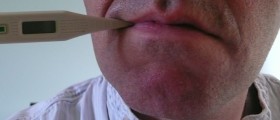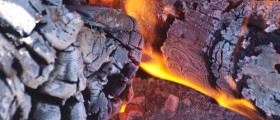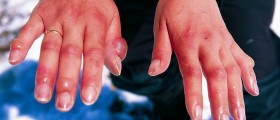
The burns are rather severe and may lead to serious complications even if they affect only small portions of the skin. The actual damage depends on the depth of the burn and the percentage of the affected surface. All the burns are classified into three groups as first, second and third degree burns. This classification is based on the depth of the affected skin.
Burns that have affected the large portions of the body lead to shock. The patient is pale, anxious and in pain. He/ she may even lose consciousness. This initial shock may also lead to secondary more severe one which occurs a few hours after the injury. The blood pressure falls and the collapse begins. The secondary shock is a result of insufficient circulation due to loss of fluid.
The fluids which are lost on the burnt spot are rich in salts (sodium and potassium) so hyponatriemia and hypokaliemia develop. The circulation is reduced and the heart is under stress and pumps blood faster. So both of these complications lead to improper heart functioning.
Infections may develop rather early. The burnt area is most susceptible to infections and the immune system cannot function properly on the affected spot. The goal is early detection of the infection. The antibiotics are administered as soon as possible.
Rare but possible complications includes gastrointestinal ulcers. They develop as a result of stress. So the patients are given antacids.
The children who have experienced burns may develop so called post-burn seizures. These seizures are a consequence of imbalance of electrolytes, infections or medications which are administered.
Fibrous masses and excessive scaring (keloids) may happen as a result of most burn accidents. Dark-skinned races are prone to keloids more than other population. These are additionally treated with surgery but the treatment is not efficient as keloids tend to come back. In case of second and third degree burns deeper tissues are damaged and this may result in contractures. Contractures limit the movements of nearby joints. In case the muscles are affected and rhabdomyolisis occurs in the muscle component called myoglobin when released. It gets into the blood stream and ends up in kidneys leading to kidney failure. Only the large quantities of myoglobin cause severe damage to kidney function.
Inhalation burns lead to severe damage to the lungs. Sometimes if the hot air is not inhaled even the aspiration of fluids in comatose patients can lead to sever lung damage. Bacterial pneumonia is one more complication of the burns. Pulmonary edema is an urgent and highly lethal condition.

















Your thoughts on this
Loading...